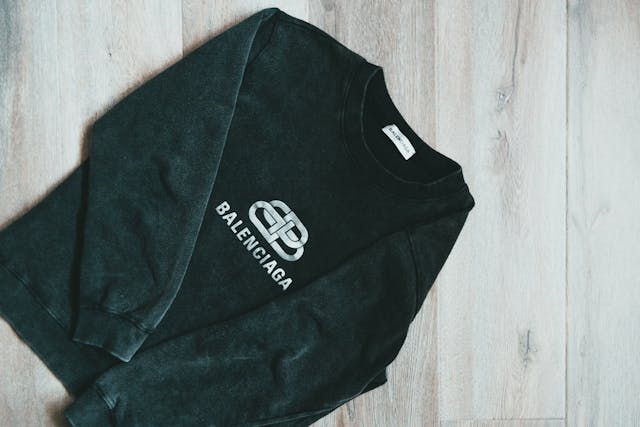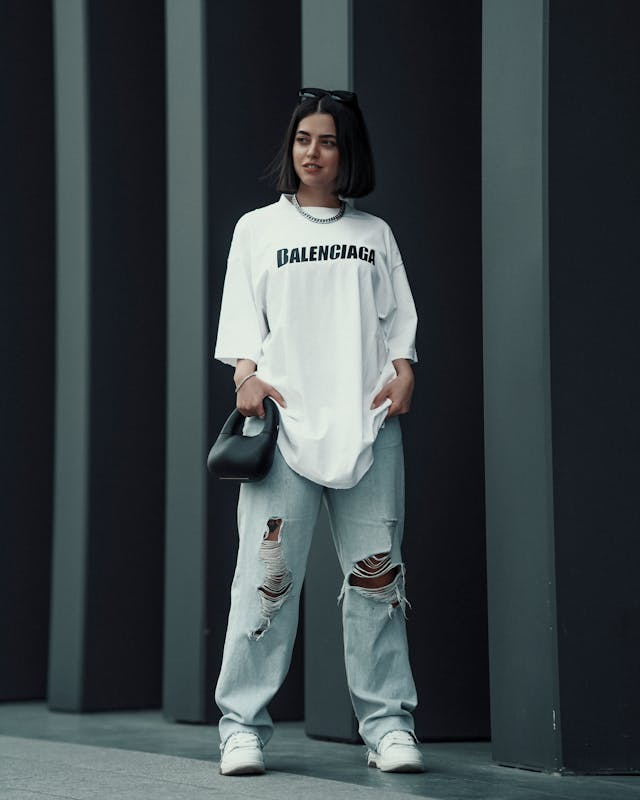Balenciaga has emerged as one of the most talked-about and influential luxury fashion brands of the past decade. Under the creative direction of Demna Gvasalia since 2015, the brand has completely revolutionized luxury marketing, challenging traditional approaches and redefining what luxury fashion means to modern consumers. This analysis explores how Balenciaga has crafted its distinctive marketing strategy and what other marketers can learn from their approach.
The Foundation: Understanding Balenciaga’s Marketing Philosophy
At its core, Balenciaga’s marketing strategy is built on subversion and disruption. The brand has deliberately moved away from conventional luxury marketing playbooks, instead embracing controversy, irony, and digital culture. This approach reflects a deep understanding of how luxury consumption has evolved in the digital age, particularly among younger consumers who value authenticity and cultural relevance over traditional status symbols.
The brand’s marketing philosophy centers around several interconnected principles that work together to create its unique position in the market. Cultural provocation serves as a cornerstone of their strategy, with the brand consistently creating campaigns and products that generate discussion and debate, ensuring they remain at the center of cultural conversations. This is complemented by their digital-first thinking, which, while maintaining an exclusive retail presence, prioritizes digital channels and social media for marketing communications.
Their collaboration strategy has proven particularly effective, forming strategic partnerships with both luxury and mass-market brands to create buzz and reach new audience segments. Perhaps most distinctively, Balenciaga has mastered the art of ironic luxury, often playing with concepts of value and luxury by creating deliberately controversial products that challenge conventional wisdom about high-fashion pricing and aesthetics.

Notable Marketing Campaigns and Strategies
The Platform Crocs collaboration of 2017 stands as one of Balenciaga’s most talked-about campaigns. By partnering with Crocs to create $850 platform versions of the casual foam clogs, Balenciaga demonstrated its ability to transform the ordinary into the extraordinary. The campaign generated immediate viral attention and controversy, challenging traditional luxury fashion conventions while creating cultural conversation about the nature of luxury and value. Its success went beyond mere sales figures, helping cement Balenciaga’s position as a cultural provocateur.
The Destroyed Paris Sneaker Campaign of 2022 further exemplified the brand’s marketing prowess. By releasing heavily distressed sneakers priced at $1,850, accompanied by advertising that showed the shoes in an extremely worn and tattered state, Balenciaga once again sparked massive social media engagement and press coverage. The campaign initiated intense debate about consumption and value in luxury fashion, while reinforcing their position as industry disruptors.
In response to pandemic restrictions, Balenciaga created “Afterworld: The Age of Tomorrow,” a video game showcasing their Fall 2021 collection. This innovative approach demonstrated digital innovation in luxury fashion marketing while engaging younger audiences through gaming. The immersive brand experience generated significant press coverage and social media discussion, proving that necessity truly can be the mother of invention in marketing.

Digital Strategy and Social Media Presence
Balenciaga’s digital strategy stands out for its unconventional approach to social media. Rather than following the standard luxury playbook of perfectly polished content, the brand often deliberately posts low-quality or seemingly amateur content. They’ve been known to clear their Instagram feed entirely before major launches and use unexpected platforms like WhatsApp for customer service. Their embrace of meme culture and internet aesthetics creates a stark contrast with traditional luxury brands’ social media presence, helping Balenciaga appear more authentic to younger consumers.
The Role of Controversy in Balenciaga’s Strategy
Controversy has been a consistent element in Balenciaga’s marketing approach, though it’s always calculated and purposeful. The brand regularly creates products and campaigns that generate debate, from their $2,145 version of IKEA’s FRAKTA bag to their deliberately oversized and disproportioned clothing items. This strategy keeps the brand consistently in public discourse, generates organic social media engagement, and appeals to younger consumers who value authenticity and boldness. While this approach has occasionally backfired, it has generally served to create and maintain a distinct brand identity in a crowded luxury market.
Collaboration Strategy
Balenciaga’s collaboration strategy has proven particularly effective in expanding their reach while maintaining their luxury positioning. Their partnerships span various sectors and demonstrate remarkable versatility. In the luxury sphere, the Gucci “Hacker Project” merged both brands’ aesthetics in an unprecedented way, while their adidas partnership brought high-fashion sensibilities to sportswear. Their mass market collaborations, including the aforementioned Crocs platform shoes and IKEA-inspired bags, have generated significant buzz while maintaining luxury price points. Cultural collaborations, such as their special episode of The Simpsons and Fortnite digital clothing collection, have helped the brand reach entirely new audiences while maintaining their distinctive voice.

Results and Impact
The results of Balenciaga’s unconventional marketing strategy speak for themselves. The brand has achieved consistent growth in brand value and revenue while building strong appeal among Gen Z and Millennial luxury consumers. Their high social media engagement and organic reach have led to regular features in mainstream media coverage, while their innovative approaches have garnered industry recognition. Perhaps most importantly, Balenciaga has successfully positioned itself as a cultural leader rather than just a fashion house, influencing both luxury and mainstream fashion trends.
Five Key Lessons for Marketers
The first crucial lesson from Balenciaga’s success is the power of strategic disruption. Breaking industry conventions can be highly effective when done purposefully and with clear strategic reasoning. The key lies in identifying industry conventions that may no longer serve modern consumers and creating calculated disruptions that align with brand values, all while maintaining consistency in the overall brand narrative.
The second lesson centers on mastering the art of cultural conversation. Balenciaga’s ability to generate and sustain cultural discussions demonstrates the importance of creating campaign elements that encourage organic sharing and discussion. Understanding and participating in current cultural dialogues, while not fearing polarizing reactions, often leads to stronger brand engagement.
Third, Balenciaga shows how to leverage digital innovation meaningfully. Their digital strategy demonstrates how luxury brands can innovate while maintaining exclusivity, experimenting with new platforms and technologies that align with target audiences. They’ve shown that brands can break platform conventions while maintaining brand value and creating immersive digital experiences.
The fourth lesson comes from their approach to collaborations. Balenciaga has redefined traditional collaboration models by looking beyond obvious partnership opportunities and using collaborations to reach new audiences while maintaining brand positioning. Their success lies in creating unexpected combinations that generate natural interest while ensuring collaborations add value beyond mere novelty.
Finally, and perhaps most importantly, Balenciaga’s success demonstrates the crucial importance of understanding modern luxury consumers. They recognize that traditional luxury markers hold less importance for younger consumers and appreciate how digital culture influences luxury consumption. Their ability to balance exclusivity with cultural relevance has created a new paradigm for luxury marketing.
Why Balenciaga’s Strategy Works
Balenciaga’s marketing strategy represents a masterclass in modern luxury brand building. By challenging conventions, embracing digital culture, and understanding changing consumer values, the brand has created a new paradigm for luxury marketing. While their specific approach may not be suitable for all brands, their success offers valuable lessons about innovation, cultural relevance, and strategic disruption in modern marketing.
The brand’s journey shows that success in contemporary marketing requires more than just traditional luxury signifiers or digital presence – it demands a deep understanding of cultural currents and the courage to challenge established norms. For marketers looking to innovate in their own sectors, Balenciaga’s example provides both inspiration and practical lessons in how to remain relevant and compelling in a rapidly evolving marketplace.

